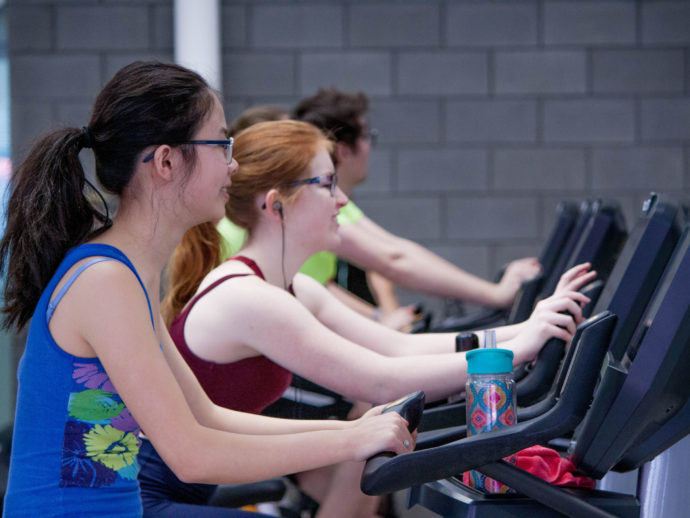
It’s September—what’s right around the corner? The dreaded cold and flu season. What if there was a way to decrease the chances of becoming a victim of a nasty virus this season? Nothing’s guaranteed, but if you could decrease the chances of becoming prey to a cold or flu, wouldn’t you want to give it a try?
Building up immunity
Keep in mind that getting sick depends on many factors, such as age, stress levels, nutrition, and amount of sleep. But most people who are active on a regular basis are helping build their bodies’ immunity to fight the germs passed around during cold and flu season.
One recent study found that adults who performed a minimum of five days per week of aerobic exercise had a decreased rate of upper respiratory tract infections as compared to adults who exercised once a week or less.
Aside from proper nutrition, washing your hands regularly, taking supplements when appropriate and getting enough sleep, physical activity is a great way to boost the immune system’s defences against nasty viruses. Exercise is thought to help boost our immune system in at least two ways: by stimulating our immune cells and by increasing our sleep quality while lowering our stress.
Keep your fitness regimen well rounded
Now when these studies talk about exercise as an immune booster, what exactly are they referring to?
Aerobic exercise
Aim to perform aerobic exercise (such as brisk walking, jogging, swimming or cycling) for 45 minutes, four to five days per week. A study performed at the University of Washington found that performing 45 minutes of moderate-intensity aerobic training for four to five days per week over the course of one year reduced the incidence of colds in postmenopausal, previously sedentary women.
Strength training
Strength training should also be included in a comprehensive exercise routine, which could be done with your own body weight or with equipment. Stretching, yoga and sports are also great ways to ensure you have a well-rounded fitness routine—and you’ll be less likely to get bored!
Of course, always check with your health care practitioner before embarking on a new exercise routine.
Exercising while sick
Is “sweating it out” when you’re sick always the best choice? Before you put your gear on and head to the gym, follow these tips:
- Let your body be your guide. If you feel horrible, take a few days off and get back to your workout routine as you begin to feel better. It’s also wise to avoid working out in a public place when contagious, even if you do feel well enough.
- If your symptoms are above the neck, exercise should be okay; however, if your symptoms are below the neck (such as chest congestion or upset stomach) or if you have fever, fatigue or muscle aches, exercise should be avoided.
- Always check with your health care practitioner if you’re not sure if it’s okay to exercise.


